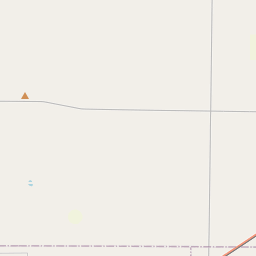E.B. Black House
508 W. Third St, Hereford Texas






Jurisdiction:
State Antiquities Landmarks (SALs) are designated by the Texas Historical Commission (THC) and receive legal protection under the Antiquities Code of Texas (the Code). The Code defines all cultural resources on non-federal public lands in the State of Texas as eligible to be designated as SALs. Historic buildings and other aboveground historic resources must be listed in the National Register of Historic Places before they can be designated as SALs, but archeological sites do not have the same prerequisite.
SAL designation does not mean that sites or buildings cannot be altered or destroyed. The land-owning agency must consult with the THC about such proposed actions through the permit process, and the THC will determine whether the work will be allowed.
Buildings designated as SALs are listed in the Texas Historic Sites Atlas. However, information about designated archeological sites is not available to the general public to protect the sites from vandalism and destruction.
The Alamo, a mission in San Antonio, is perhaps the most famous historical site in Texas. It was the site of a key battle during the Texas Revolution in 1836.
In 1876, the Texas Legislature established Deaf Smith County, named after Erastus "Deaf" Smith, a deaf mute scout and hero of the Texas Revolution. The county was officially organized in 1890 with the town of Hereford serving as the county seat. Agriculture quickly became the dominant industry, with cattle ranching and farming driving the local economy.
The arrival of the railroad in the early 1900s further spurred growth in Deaf Smith County. It opened up new markets and opportunities for farmers and ranchers to transport their goods. The population grew steadily, and new towns and communities were established throughout the area.
In the 20th century, Deaf Smith County faced a series of challenges, including the Dust Bowl of the 1930s and the Great Depression. However, the county survived and rebounded with the help of federal programs and initiatives. Today, the economy of Deaf Smith County is diversified, with agriculture, manufacturing, and retail sectors contributing to its prosperity. The county's rich history and resilient spirit continue to shape its identity and pave the way for a promising future.
Deaf Smith County Timeline
This timeline provides a glimpse into the major events and milestones that have shaped the history of Deaf Smith County, Texas.
- 1838 - Josiah Hughes Bell settles in the area, becoming the first English-speaking settler in what is now Deaf Smith County
- 1874 - The Texas Legislature officially establishes Deaf Smith County
- 1881 - The town of Hereford is founded as the county seat
- 1913 - The county experiences a major oil and gas boom, leading to rapid growth and economic prosperity
- 1929 - The Great Depression hits, causing significant economic hardship in the county
- 1935 - The Works Progress Administration (WPA) builds Palo Duro High School, the first high school in Deaf Smith County
- 1955 - Pantex, a nuclear weapons assembly and disassembly facility, is established in the county, becoming a major employer and economic driver
- 1969 - The Deaf Smith County Historical Society is founded to preserve and promote the county's history
- 1995 - The Hereford Independent School District constructs a new high school building
- 2017 - Deaf Smith County celebrates its 143rd anniversary